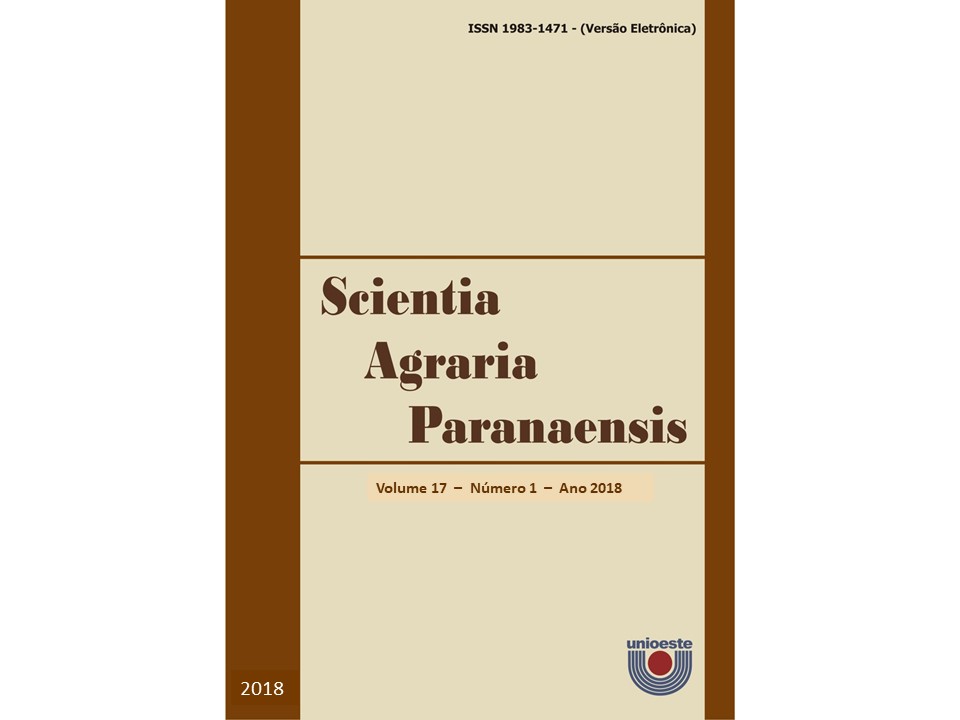EARLY ACQUISITION OF GRAPEVINE PLANTS IN GRAFTING OF TIMES AND ROOT INDUCTION BY BASEMENT HEATING
Keywords:
Vitis sp., propagação, enraizamento, porta-enxerto.Abstract
The grapevine propagation is usually made using grafting directly in the field, on rootstocks planted the previous year in situ, or rooted in the nursery. In this process the change takes about two years to be formed. Given the above, the aim of the present work in advance to obtain grapevine plants in grafting times and root induction through basal heating. As rootstock used the grapevine hybrid ‘Riparia’ x ‘Rupestris 101-14’ and the cv. ‘Niagara Branca’. The experimental design was a randomized complete block, in a 3x5 factorial scheme, containing four replications, and resulted from two factors, with factor A, consisting of three pre-treatments for rootstock cuttings (control = A1, humid = 24 hours in water = A2 and 2000 mg L-1 of AIB in hydroalcoholic solution 50% = A3) x five combinations (B) between root induction, grafting and planting time, being: B1 = table grafting followed by root induction by heating basal at 21ºC for 30 days and planting in plastic bags; B2 = root induction of rootstocks by basal heating at 21ºC for 30 days, grafting 30 days after collection and planting in plastic bags. B3 = root induction of rootstocks by basal heating at 21ºC for 30 days, planting in plastic bags and grafting 60 days after collection; B4 = table grafting and planting in plastic bags and B5 = planting in plastic bags and grafting 60 days after collection. The basal heating chamber induced a high rooting rate of cuttings (80%), but did not affect the rate of plants formation. Pretreatment with AIB was unfavorable to the formation of seedlings. It is possible to obtain grape seedlings at 7 months. Treatment with basal heating resulted in high rooting rate of cuttings (80%), but did not affect the percentage of seedling.
Downloads
Published
How to Cite
Issue
Section
License
Aviso de Direito Autoral Creative Commons
Política para Periódicos de Acesso Livre
Autores que publicam nesta revista concordam com os seguintes termos:
1. Autores mantém os direitos autorais e concedem à revista o direito de primeira publicação, com o trabalho simultaneamente licenciado sob a Licença Creative Commons Attribution que permite o compartilhamento do trabalho com reconhecimento da autoria e publicação inicial nesta revista.2. Autores têm autorização para assumir contratos adicionais separadamente, para distribuição não-exclusiva da versão do trabalho publicada nesta revista (ex.: publicar em repositório institucional ou como capítulo de livro), com reconhecimento de autoria e publicação inicial nesta revista.
3. Autores têm permissão e são estimulados a publicar e distribuir seu trabalho online (ex.: em repositórios institucionais ou na sua página pessoal) a qualquer ponto antes ou durante o processo editorial, já que isso pode gerar alterações produtivas, bem como aumentar o impacto e a citação do trabalho publicado (Veja O Efeito do Acesso Livre).
Licença Creative Commons
Esta obra está licenciada com uma Licença Creative Commons Atribuição-NãoComercial-CompartilhaIgual 4.0 Internacional, o que permite compartilhar, copiar, distribuir, exibir, reproduzir, a totalidade ou partes desde que não tenha objetivo comercial e sejam citados os autores e a fonte.


